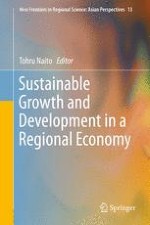2016 | OriginalPaper | Buchkapitel
9. Urban Unemployment, Privatization Policy, and a Differentiated Mixed Oligopoly
verfasst von : Tohru Naito
Erschienen in: Sustainable Growth and Development in a Regional Economy
Verlag: Springer Japan
Aktivieren Sie unsere intelligente Suche, um passende Fachinhalte oder Patente zu finden.
Wählen Sie Textabschnitte aus um mit Künstlicher Intelligenz passenden Patente zu finden. powered by
Markieren Sie Textabschnitte, um KI-gestützt weitere passende Inhalte zu finden. powered by
